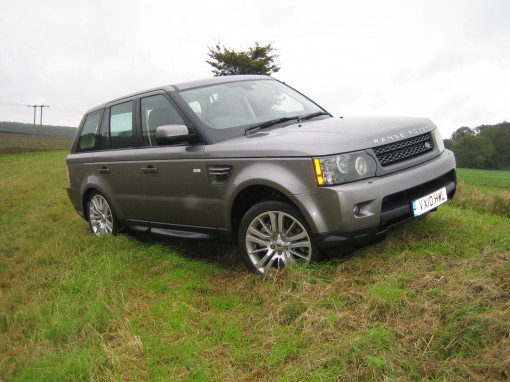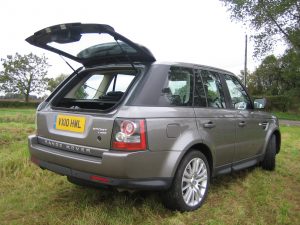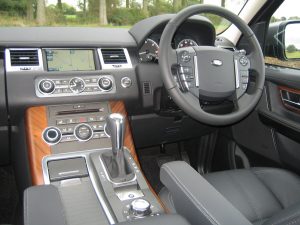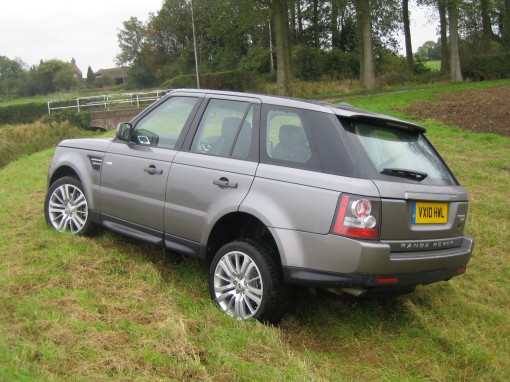Range Rover Sport does the lot – in style and luxury
If you want the perfect all rounder, editor DAVID HOOPER, says the Range Rover Sport has to be it.
IF you want the complete car, then this Range Rover Sport surely has to be it. Many question why people like, or need such big cars, but after spending a few days piloting this monster, I have been reminded of exactly how good they are.
The answer to that question is simple. It does everything – brilliantly! It’s chunky styling is classically British. It looks equally at home on the drive of your country estate, parked outside the swankiest of hotels, or up to its axles in mud – and being a proper 4×4, with decades of heritage, it’s unlikely to get stuck.
Its seats are like armchairs, and as my dad pointed out, people of a certain age have no difficulties getting in and out of the car thanks to its high seating position.
Inside, it drives almost silently, with virtually no noise from the silky-smooth 3.0-litre V6 diesel, or the road, audible inside the car. Yet the engine will propel it from rest to 62mph in just 8.8 seconds and on to a top speed of 120mph. Its interior, which features straight grained walnut, plenty of ebony leather, and some smart silver touches, has all the latest toys, including a TV on the model I’ve been testing. It has a boot large enough to swallow all the golfing kit you could rustle up, plus a few pairs of green wellies, and large brollies, for good measure. The split tailgate, is handy too – you can open just the rear window to drop light items through, or the entire tailgate.
On the road, it is as comfortable as any car you can name, will pull a house, or a twin-axle caravan with ease, and to those who label cars of this type as gas guzzlers, I would suggest that an average fuel consumption figure, in real world driving conditions of 28.5mpg isn’t too shabby by anyone’s standards, especially when you consider that the figure was achieved over distance of of 618 miles. As further evidence of this car’s frugality, on a trip to Skipton in the beautiful Yorkshire Dales, a round trip of 246 miles, the car returned an incredible average fuel consumption figure of 32.9mpg, travelling at around 65mph on the motorways. These figures are better than those many a luxury saloon could return – and luxury saloons aren’t nearly as practical as a Range Rover. Its C02 emissions figure of 243g/km means you will be paying top dollar for your road tax though. Then there’s the excellent Terrain Response System, which, at the twist of a dial, will set the car’s systems up for tackling, anything from grass or gravel, or mud and ruts, to the most severe terrain you can throw at it.
Not many luxury saloons can entertain you as well as this car can, either. Its Harman Kardon Logic 7 hi-fi system sounds incredible – Harold Faltermeyer’s theme to the Beverley Hills Cop film was particularly memorable, and at full volume the clarity was superb. I even managed to watch a bit of the Commonwealth Games in a traffic jam on the car’s in-car TV system. Rear seat passengers aren’t left out either, with each having their own screen, mounted in the headrests, on which they can watch different films. Costing £2,250 it isn’t cheap, but what price well-behaved children on a long journey?
Another expensive option, but quite a useful one, is the Adaptive Cruise Control. It costs £1,399 but takes a lot of the stress out of motorway driving and certainly provides a talking point for your passengers, who probably haven’t seen anything like it before. The driver sets the cruise control at the desired speed, as you normally do in any car, but where the adaptive system differs, is in that when you catch up with another vehicle, or if something moves pulls out in front of you, the radar system on the car will recognise the changing situation and initially illuminate an orange light on the dashboard to alert the driver, giving them time to change lanes. If the driver doesn’t change lanes, the car will automatically reduce its speed and even brake quite firmly if necessary, to maintain a safe distance between you and car in front. When it moves out of the way, the Range Rover will then accelerate back to its preset cruising speed. You can even adjust the distance you want between you and car in front, with an image of the Range Rover displayed on the dashboard.
Other options on this car included tyre pressure monitoring, steering wheel mounted paddle shifters and an electric sunroof – all very nice, but they added up to over £6,000, taking the total price to just over £60,000.
It’s a lot of money, but it’s an awful lot of car!
Rating: 



































THE VITAL STATISTICS
MODEL: RANGE ROVER SPORT 3.0 TD V6 HSE.
RANGE ROVER RANGE: From 3.0 TD V6 SE (£46,995) to 5.0 V8 Supercharged Autobiography Sport (£70,995).
ENGINE: 2993cc, 245PS V6-cylinder engine, driving four wheels through 6-speed automatic gearbox.
CO2 EMISSIONS: 243g/km.
PERFORMANCE: Top speed 120mph. 0-62mph in 8.8 secs.
ECONOMY: City: 25.2mpg.
Country: 34.9mpg.
Combined: 30.7mpg.
Fuel tank: 84 litres.
WARRANTY: 3 years/Unlimited mileage.
PRICE: £53,995.
WEBSITE: www.landrover.co.uk




